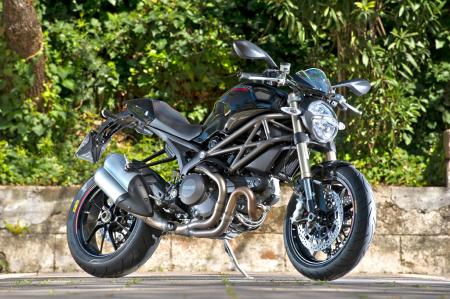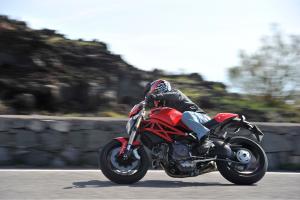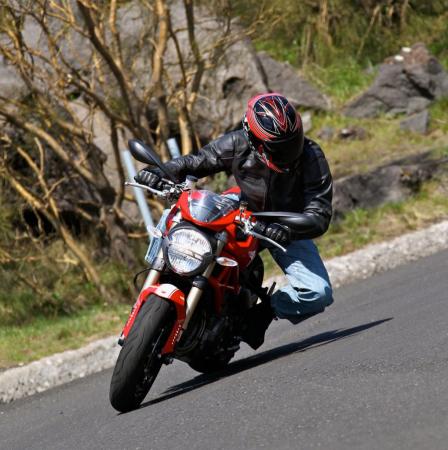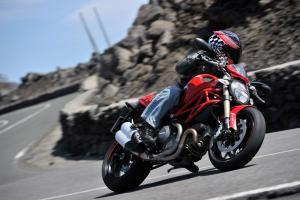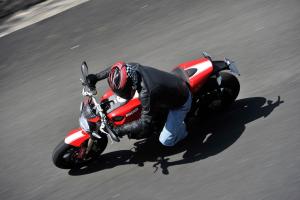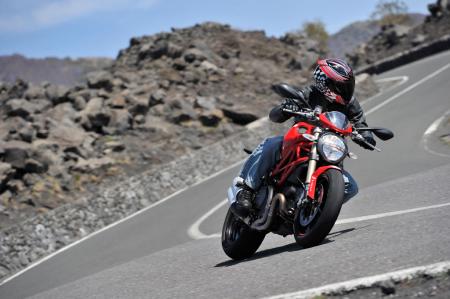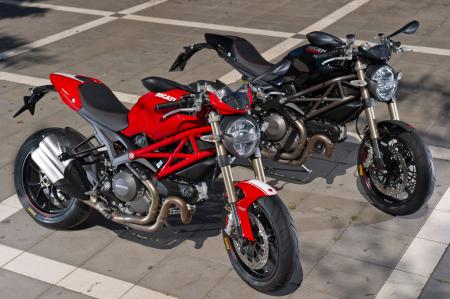A new-bike press introduction is kind of like a honeymoon. A nice hotel and an exotic location can’t help but make your partner seem as sexy as possible.
Such as it was at the world press launch for Kawasaki’s thoroughly updated ZX-6R. Riding the new Ninja around Japan’s Autopolis circuit was like sex on wheels. It was difficult to find any fault with the ZX as we consummated the relationship at the fabulous race circuit.
But how would the ZX-6R perform during the bumps and grind of street riding? And would major engine mods pay off once we strapped the Ninja to the dyno? Would the bloom fall off the rose?
The answers, in order, are: surprisingly well; yes; and no!
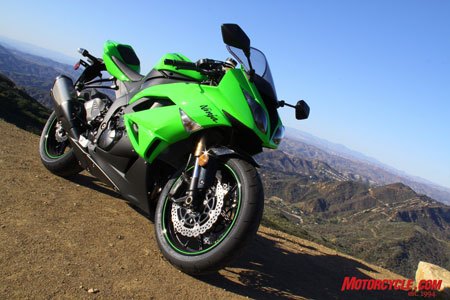 |
Our last few weeks with Kawi’s newest Ninja have proven it has the goods to go toe to toe with the best in the ultra-competitive middleweight sportbike class.
During our time on the ZX at Autopolis, we already learned that the new bike steers sharper than the previous generation, aided by sportier steering geometry and the loss of some 20 lbs. Our biggest question mark revolved around the output of the newly enhanced motor. The 3000-ft elevation of Autopolis muddied the waters somewhat.
But now we’re back near sea level and we have the Area P dyno to tell us things our butt dyno can’t. The ZX spat out an impressive 107.7 horsepower on the ol’ Dynojet, which is very competitive with its rivals in terms of peak ponies and a massive 10 hp jump over the previous model. But that number only tells part of the equation. The Ninja now has some real midrange cojones, something it’s been missing since its 636cc days. Most illuminating is how the ZX’s entire powerband mostly keeps up or exceeds that of Honda’s CBR600RR, easily the punchiest 600 over the previous two years.
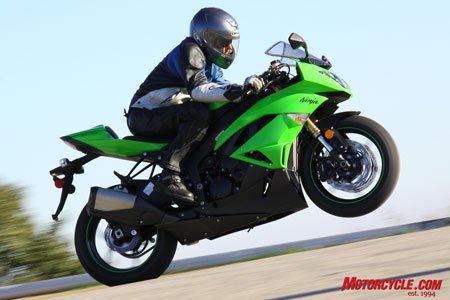 |
On the street, this broad power curve and short gearing provide for strong launches away from traffic lights. Good, usable power arrives as low as 7,000 rpm, which makes for impressive acceleration at street-appropriate revs. And its roll-on grunt is amazing for a 600. Its immediate responsiveness in top gear at 80 mph makes a rider check the handy gear indicator to see if it’s in fifth or even fourth gear.
 |
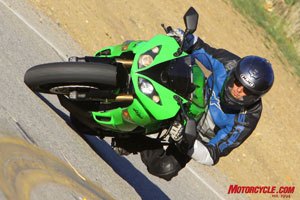 |
Engine vibration is readily apparent at idle, but it turns smooth at cruising speeds. The ZX exhibits immaculate throttle response, always delivering a nuanced transition from closed throttle, something all fuel-injected bikes can’t claim. And despite the EPA’s best efforts to make every motorcycle sound like a turbocharged sewing machine, the ZX delivers a deliciously howling soundtrack to its rider. Gearshifts are done with little effort and smoothly for the most part, but re-engaging gears from neutral can be notchy at times.
In commuter use, the Ninja’s riding position is reasonably hospitable for a supersport. Its bars are fairly close to the rider but a bit low for good street comfort. A narrow windscreen allows wrist-relieving air pressure to hit a rider’s shoulders at highway speeds, and the flow around a helmet is smooth. The mirrors provide a decent view and are even halfway attractive. And speaking of appearances, we think this new, sharp-edged design is one of the best looking 600cc Ninjas ever.
But cruising around city streets is just a preamble to the ZX’s main attraction of tearing up serpentine canyon roads. The many changes to the new frame and chassis geometry give the Kawi a newfound agility plus robust feedback from the front end. The stock dual-compound Bridgestone BT-016 tires are impressive - proving to be splendidly neutral while providing excellent grip. The Kawi’s brakes are faultless, being as powerful as you dare yet amazingly subtle when you want to bleed just a hair of speed during corner entrances.
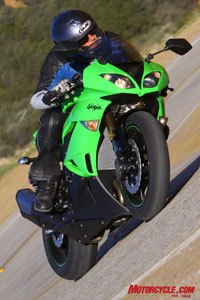
The middleweight Ninja is blessed with a thoroughly modern suspension. Up front is Showa’s Big Piston Fork, a fresh new design that saves weight and potentially offers improved performance (see our First Ride report for further details). At the rear, the shock includes the usual adjustments for preload and two-way low-speed damping, plus the addition of high-speed compression damping. Beefy Americans will appreciate the bike’s stiff springs, although they proved to be a bit too firm for my 145 lb frame. Some spring preload alterations might find a sweet spot for lightweights. We’ll have time for optimizing the suspension in time for our upcoming Supersport Shootout.
So, after a few hundred miles on the street, our favorable impression from the ZX-6R’s racetrack press launch hasn’t dimmed. As we predicted then, this stellar new sportbike has the goods to run with the best in the 600cc class. Exactly how it stacks up against its worthy competition will have to wait until we ride them all back to back, but one thing is certain: The Ninja will not again be finishing at the back of the pack.
